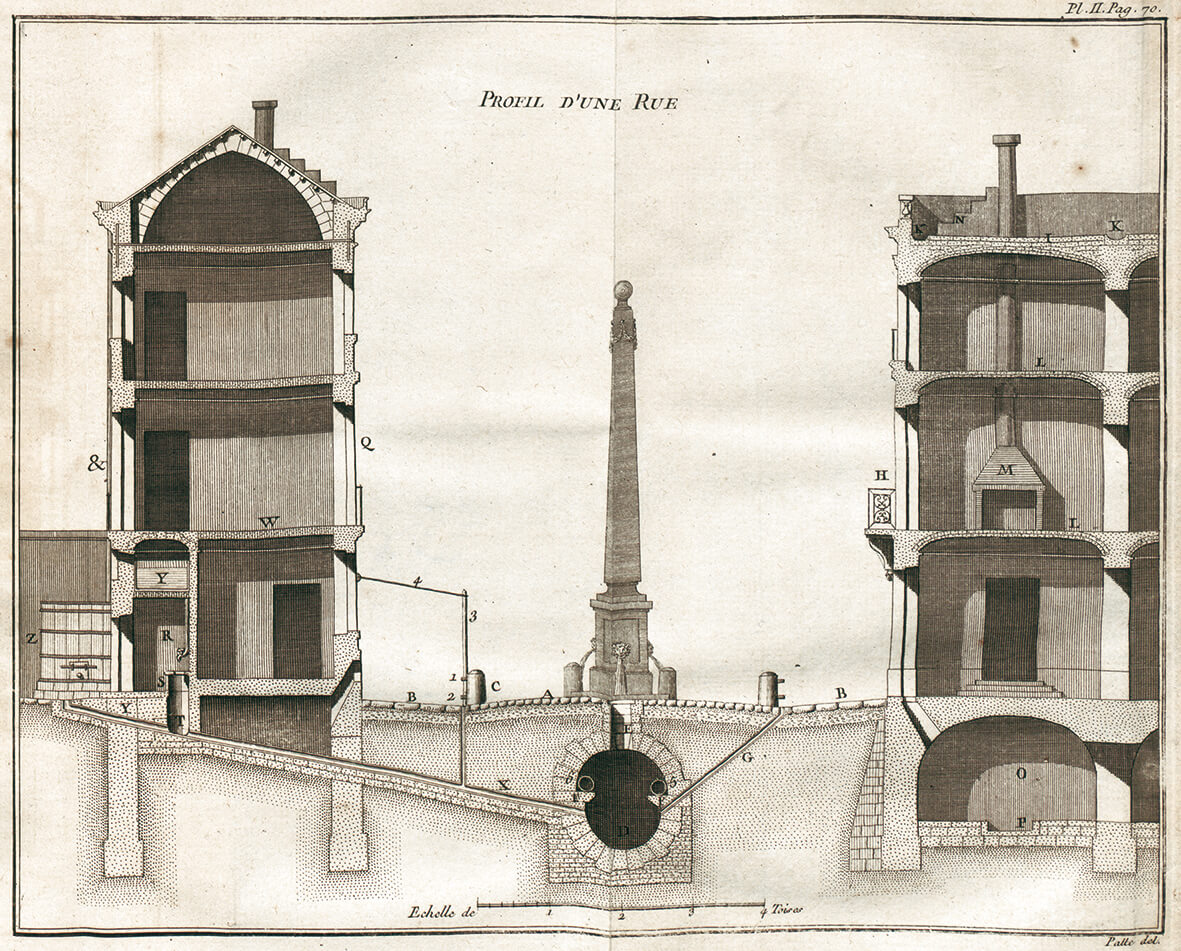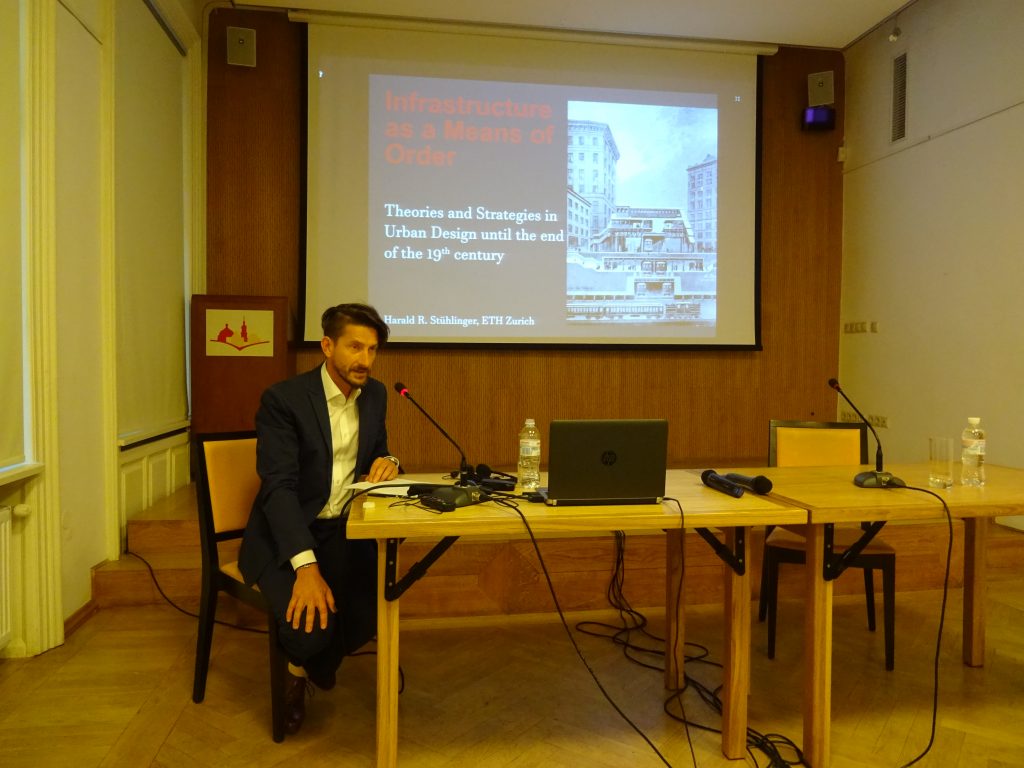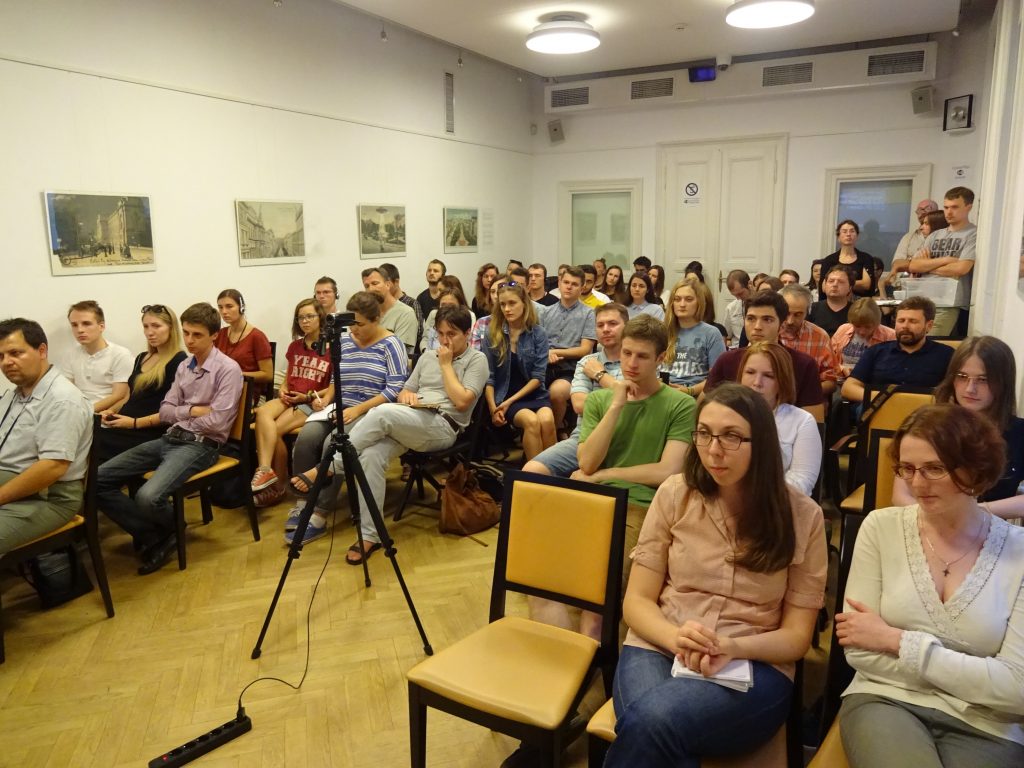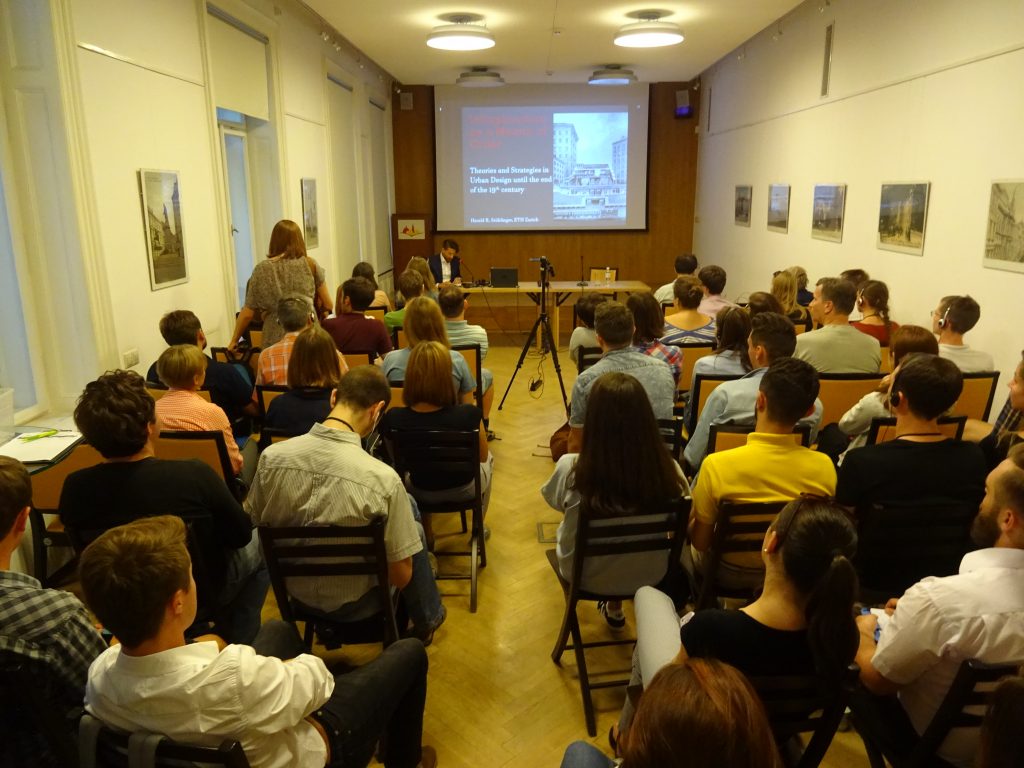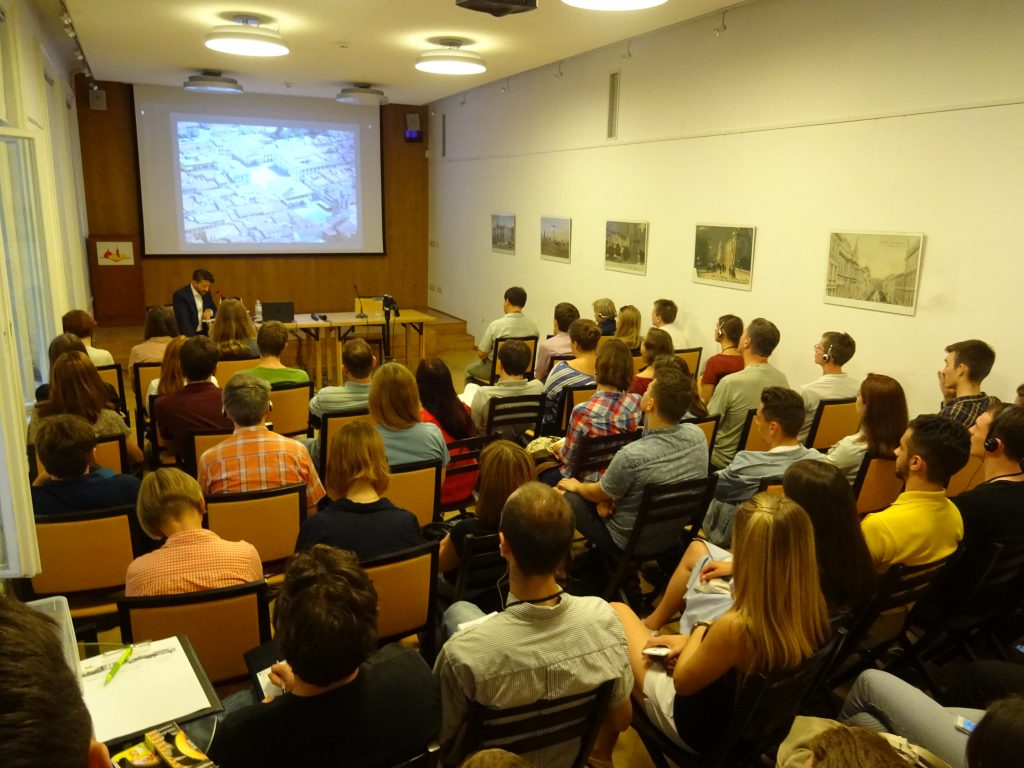Infrastructure as a Means of Order: a History of Organisation of Public Space
September 13, 2016
Center for Urban History, Lviv
Many ancient cities had it and most of the modern cities had to wait very long to get a functioning urban infrastructure. If city existed mainly above ground – except the foundation, cellars and hidden secret passages – the urban underground started to become an object of desire in the second half of the nineteenth century. Paris and London were the infrastructural avant-garde after which the rest of European and worldwide cities strived to become better places to live.
The presentation analysed the city on an urban but also architectonic scale and looks into different kinds of infrastructure and its impact on the physical appearance, on the cityscape and on the urban layout. It examined writings from the beginning of the discipline of urban design, with urban design manuals being the most important means to disseminate the functional inventions and ideals.

Harald R. Stühlinger
is a trained architect and art historian, who has studied in Vienna and Venice. He is an assistant professor at the ETH Zurich and at the University of Zurich and works as a free-lance curator for architecture and cultural history exhibitions. His major interests lay in urban design history (19th century) and architectural history (12th-19th century) as well as in the history of photography (19-20th century).
Credits
Сover Image: Pierre Patte; Project for an ideal street, 1769
